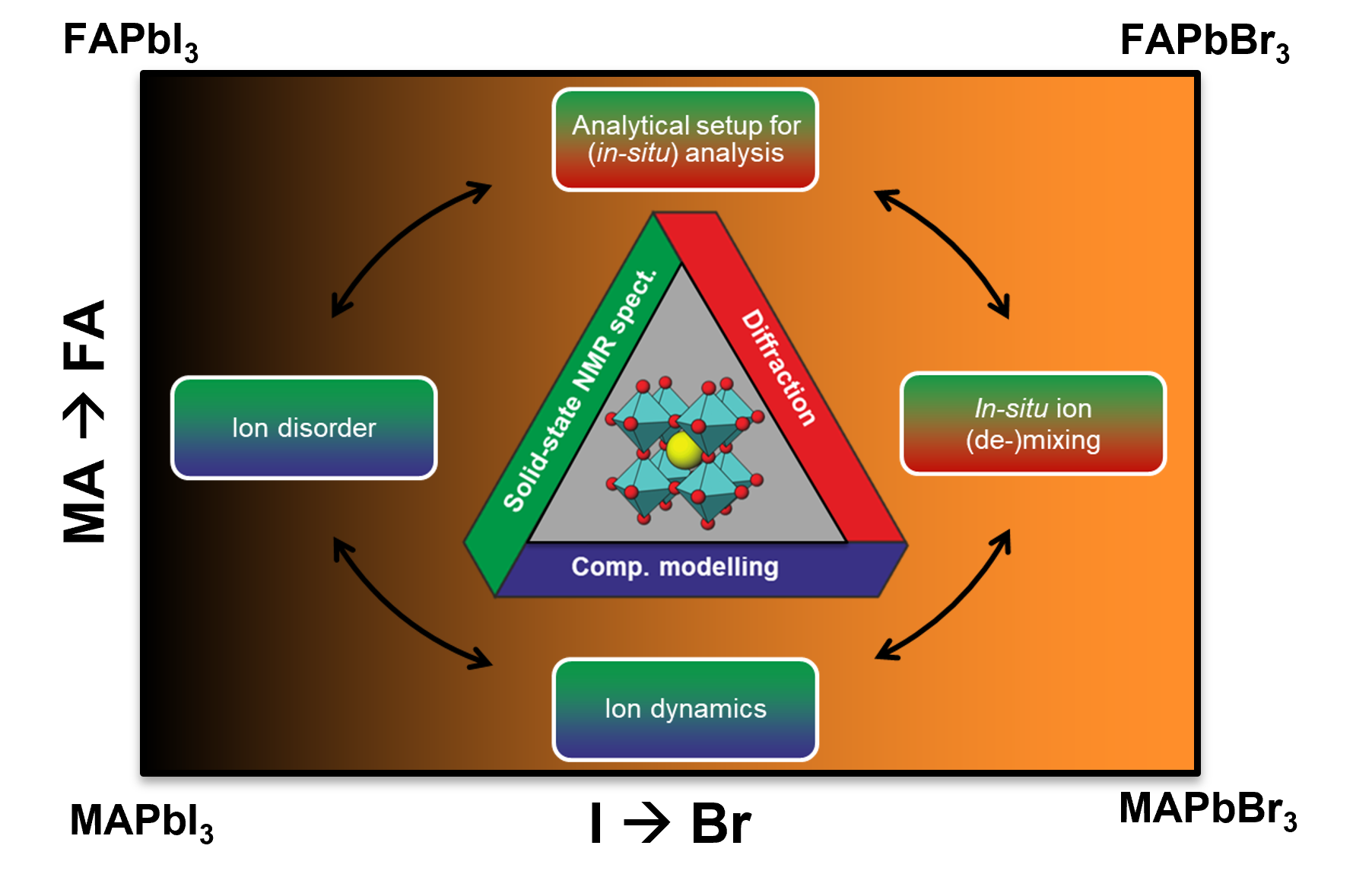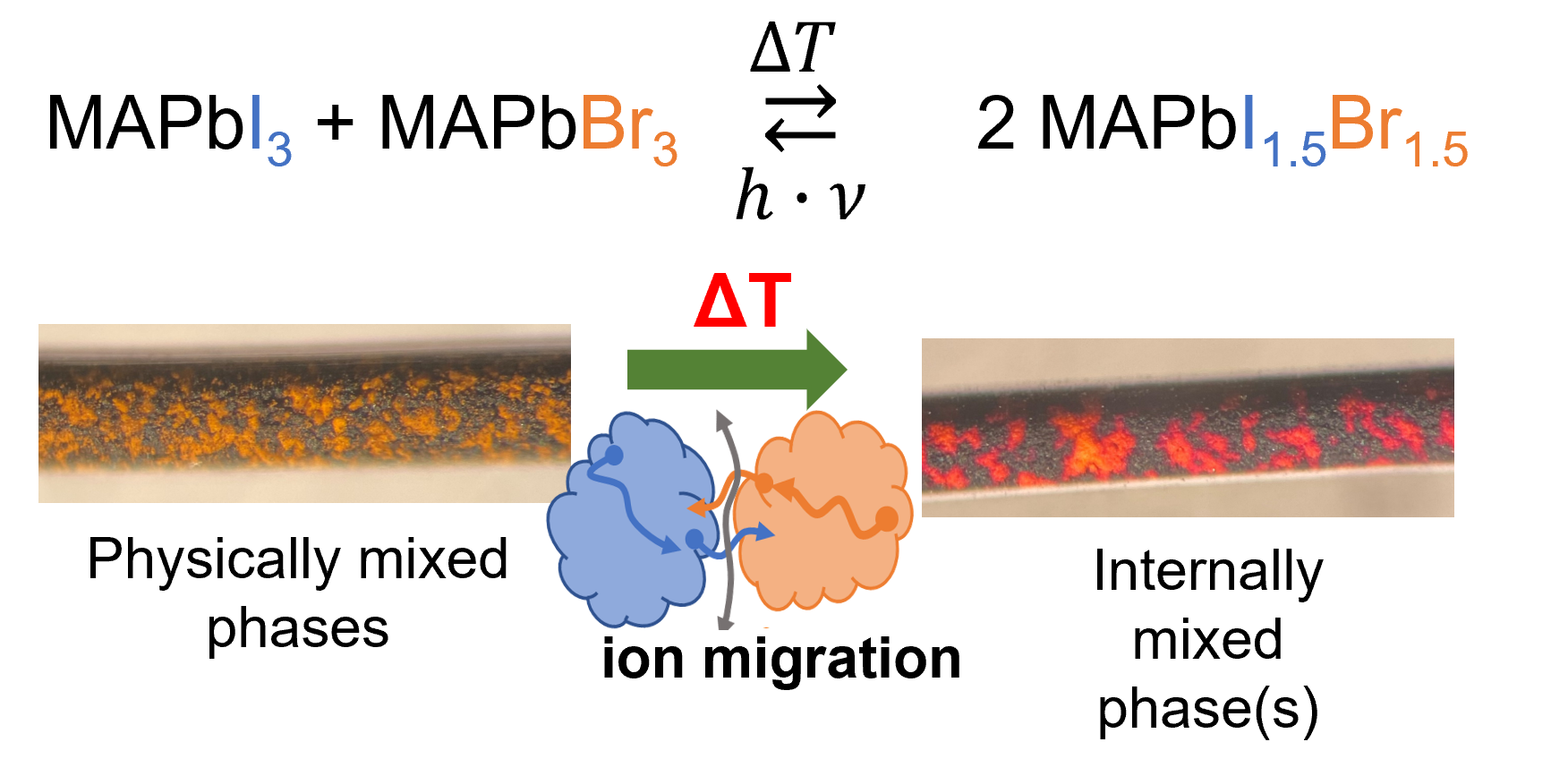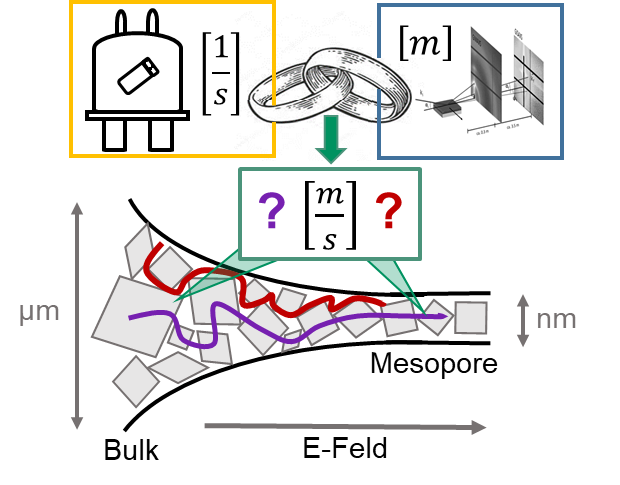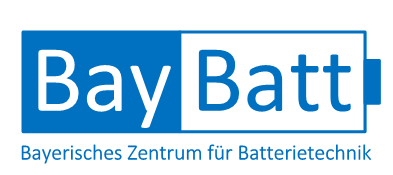Research Grüninger Group

Disorder in Lead Halide Perovskites
Contact: H. Grüninger, F. Haddadi Barzoki
Hybrid lead halide perovskites are currently considered one of the most promising semiconductor materials for the next generation of solar cells. Due to their structural flexibility to incorporate mixtures of different organic and inorganic cations, and halides, a wide compositional range is accessible allowing for e.g. tuning of the band-gap energy. However, highly alloyed perovskite compositions introduce a high degree of disorder, statically and dynamically....more

In-situ halide (de-)mixing in hybrid perovskites
Contact: H. Grüninger, F. Haddadi Barzoki
Mixed halide lead perovskites of the form MAPbI3-xBrx exhibit suitable band-gap energies for highly-efficient tandem solar cell applications. However, when exposed to light, mixed halide perovskites exhibit a severe demixing behavior of their ions, which leads to deterioration of the optoelectronic and device performance of the perovskite and corresponding solar cells, currently hindering their successful commercialization. This project thus aims to comprehensively understand the complex structural dynamics that occur during the (de)mixing of halide perovskites, to improve their phase stability, while preserving their excellent optoelectronic properties....more

Controlling ion and electron transport in hybrid perovskites confined in mesoporous matrices
Contact: O. Alsheikha, H. Grüninger
Within the CRC 1585 "MultiTrans" this project (B03) investigates ion and electron transport in hybrid lead halide perovskites confined in mesoporous matrices as a function of pore size and geometry, and interface interactions. External electric fields are used to trigger ion and electron transport in the structured composites and the transport pathways will be analysed using in-situ NMR spectroscopy and diffraction to yield structural and dynamical information locally and globally. Through the transition from bulk transport to transport in systematically restricted nanopores, and associated interfaces, we expect to understand and separate ion and electron transport...more

In-situ/operando NMR spectroscopy for batteries
Contact: M. Valizadeh, H. Grüninger
Dynamic processes with correlated ion and electron transport play a crucial role for energy materials in photovoltaics, fuel cell technology and batteries. The transient structural changes in the materials require in-situ and operando analyses to derive structure-function principles and to characterize undesired side reactions. Both the development of the method and the understanding of the material can benefit from each other. Solid-state NMR spectroscopy is sensitive to both the local structure and the dynamics of the ions in the materials. Due to the nuclei-specific character, this information is also resolved for the different elements. This makes NMR particularly suitable for studying ion mobility in energy materials and associated phase changes, including amorphous and disordered structures such as transient electrode structures or electrolyte-electrode interfaces. The combined information on dynamics and structure allows to correlate ion mobility in different battery components with transient structures and/or dimensionalities (1D->3D) in electrode or solid electrolyte materials.
